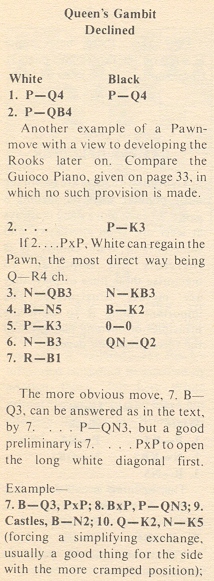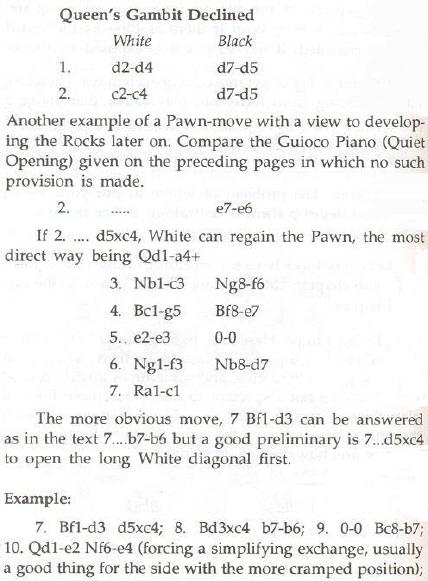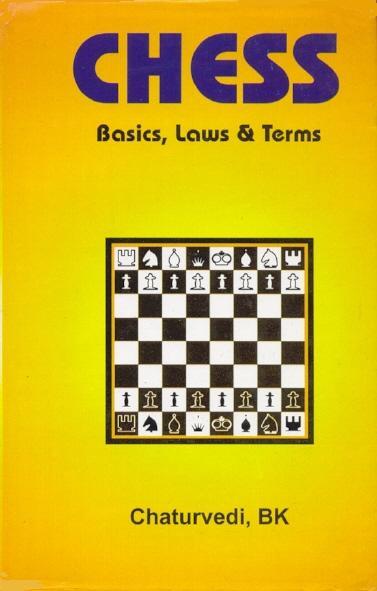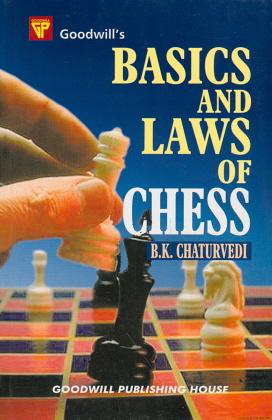

Edward Winter
Any serious contender for the ‘Worst-ever Chess Book Award’ needs to display a comprehensive range of defects, for the competition is tough. Spectacular incompetence with basic facts is a sine qua non. There must also be many typos (or ‘mere typos’, as some self-exculpatory authors like to call them), with at least one or two jumping out to hit the eye from almost any page where the opened volume happens to expose itself. The prose should be excruciating. Wily and/or inept propaganda is de rigueur. As its crowning glory, the book should contain the uncredited lifting of other people’s writing, whilst also featuring self-congratulatory words about its superiority over rival titles.
At this point, a number of readers will naturally be anticipating the nomination of Nathan Divinsky’s The Batsford Chess Encyclopedia, but we intend to consider another front-runner, a 191-page hardback published in India in 2001: Chess (Basics, Laws and Terms) by B.K. Chaturvedi.
His Preface includes the observation ‘this book starts with the presumption that the reader is totally uninitiated’, but the reader ends with the presumption that it is the author who merits that description. Page 187 defines the ‘Closed Game’ as ‘Types of opening with 1. P-e4, P-e4.’, while page 189 supplies this explanation of ‘Open Games’: ‘Games played with not the standard type of openings like e4 etc.’ On page 188 we are told that ‘Control’ is ‘A Piece controlling a square without the square being accessible to it.’ The definition of ‘Zugz Wang’ (page 191) begins not with a sentence but with a string of words: ‘A situation where the obligation to move is less than a handicap because any move likely to damage the position of the mover.’ Full stop.
The spelling ‘Zugz Wang’ comes as no surprise, since from the outset the author demonstrates indifference to the way words in any language end up on the printed page. Page 4 advises how to write the word ‘chess’ in various languages (e.g. ‘Schah’ in German, ‘Schak’ in Danish and ‘Seacchi’ in Italian).
As regards blindfold chess we are unaccountably informed on page 140 that Capablanca ‘is believed to have started this tradition’. On page 7 it is called ‘bling-fold’. Typos exist by the basinful. Information, of sorts, is offered on such masters as ‘Labour Domais’, ‘Steintz’, ‘Nninzovich’, ‘Enwe’, ‘Resbevsky’ and ‘Rober Fisher’, as well as ‘the famous chess historian Musray’. On page 9 we learn that Emanuel Lasker (‘Emmanuel’ and ‘Emanual’ are the book’s variant spellings) ‘remained world champion for a very long period (1821-1921) which is still a record’. And so it should be, given that 1821 virtually predates the chess career of Labour Domais. The following page records that at Hastings, 1895 three of Pillsbury’s opponents were ‘Schtechter, Schlecter, Jauowshi’. In some passages it is unclear whether the text was typed or something fell on the keyboard.
Next, a few samples of Mr Chaturvedi’s prose. On page 8 he comments regarding Steinitz: ‘Many of his compositions served as the beacons to the new learners of this brainy game.’ On page 25 readers are informed how the knight moves: ‘He does not jump in the sense what a checker piece does; that is, he does not capture what he jumps over.’ Page 37 has further instruction: ‘Although we have already hinted about values each Piece is worth of, now we are giving their comparative details.’ A few pages later (page 41) the reader is considered ready for an introduction to chess notation: ‘Chess, being a game of pure intelligence and powerful imagination, has ever remained the beloved of intelligent persons. So they devised a system of enjoying the game even if they are absent. That system is writing notations for the moves.’
If only for its prose, typos and blunders, Mr Chaturvedi’s hardback would stand out from most (though by no means all) chess books, but there is more, starting with some deceptive flag-waving. In his 1995 match against Kasparov in New York, Anand won the first decisive game (game 9) but scored only +0 –4 =4 in the remainder of the match. Any respectable author would thus employ a word such as ‘comfortable’ or ‘decisive’ to describe Kasparov’s victory, but not Mr Chaturvedi. He writes on page 3:
‘However, the most renowned Indian chess player to date is Vishwanath [sic] Anand who recently challenged the current World Chess Champion Gary Kasparov and missed the mark with a difference of just four [sic] points.’
And from page 11 of this book (which, we reiterate, was published in 2001):
‘The present title holder is Gary Kasparov. He was challenged by India’s Vishwanath [sic] Anand or “Vishy” in 1995 and despite Vishy’s claiming initial victories [sic – the propagandist’s plural] and forcing Kasparov to draw, he eventually lost. So Kasparov remains the undisputed Chess Champion.’
For all this, of course, Anand himself is blameless, just as it was hardly Nigel Short’s fault that a small number of British ‘chess writers’ elected to slop jingoistic treacle over his shoulders before, during and after his 1993 match with Kasparov.
Mr Chaturvedi’s Preface tries to answer a question that may be uppermost in many of his readers’ minds, i.e. why the book was published at all:
‘Despite its gaining popularity, good Indian books on chess are still a rare commodity. Most of the books that are available in the market are either by foreign authors – which cost a lot – or the replica of their works which appear not only cheap in price and production but contain a lot of misprints and mistakes. No doubt the foreign books are good if one can afford them, but they appear to be totally foreign in their style and presentation.’
In reality, Indian beginners would do better to procure a little book like Chess Made Easy by C.J.S. Purdy and G. Koshnitsky (first published in 1942 but frequently reissued and updated since then). It is certainly ‘cheap in price’ and does not ‘contain a lot of misprints and mistakes’. Above all, despite the handicap of being ‘by foreign authors’ it can hardly be one of the works dismissed by Mr Chaturvedi as ‘totally foreign in their style and presentation’, for the simple reason that he has pirated it and tried to pass it off as his own work. One example from dozens occurs on pages 29-30:
‘Once in a game, you have a privilege of moving two pieces in a single move – the King and one Rook. This is called “castling”. Castling can be done only when the King and the Rook have as yet made no move in the game, and have nothing between them.’
Let us compare that with pages 13-14 of Chess Made Easy (of which we are following the 1986 edition):
‘Once in a game, you have the privilege of moving two pieces in a single move – the King and one Rook. This is called “castling”. Castling can be done only when the King and Rook have as yet made no move in the game, and have nothing between them.’
Some parts of Mr Chaturvedi’s book do indeed manage to copy textual matter relatively accurately, but the plagiarist’s customary ineptitude always shines through eventually. For example, page 36 of the Purdy/Koshnitsky book has a discussion of the Queen’s Gambit Declined which begins:
‘1 P-Q4 P-Q4 2 P-QB4 Another example of a Pawn-move with a view to developing the Rooks later on.’
In contrast, Mr Chaturvedi’s book (page 92) states:
‘1 d2-d4 d7-d5 2 c2-c4 d7-d5 [sic] Another example of a Pawn-move with a view to developing the Rocks [sic] later on.’


Purdy/Koshnitsky, page 36 (left)
and Chaturvedi, page 92
A further instance relates to page 46 of the Purdy/Koshnitsky book:
‘The commonest ending in chess is King and Queen against lone King.’
Page 115 of the Indian book has:
‘The commonest ending in chess is King and Queen against love King.’
The plagiarism concerns not a handful of isolated passages but almost the entirety of the Purdy/Koshnitsky book. It must be hoped that the Australian publishers will take appropriate action.
Chess (Basics, Laws and Terms) by B.K. Chaturvedi was brought out in 2001 by Abhishek Publications, 57-59, Sector 17-C, Chandigarh-17, India.

Note: This article originally appeared as C.N. 2750. See also C.N. 4683.
There exists too a paperback version, from Goodwill Publishing House, New Delhi (undated):

To the Chess Notes main page.
To the Archives for other feature articles.
Copyright: Edward Winter. All rights reserved.